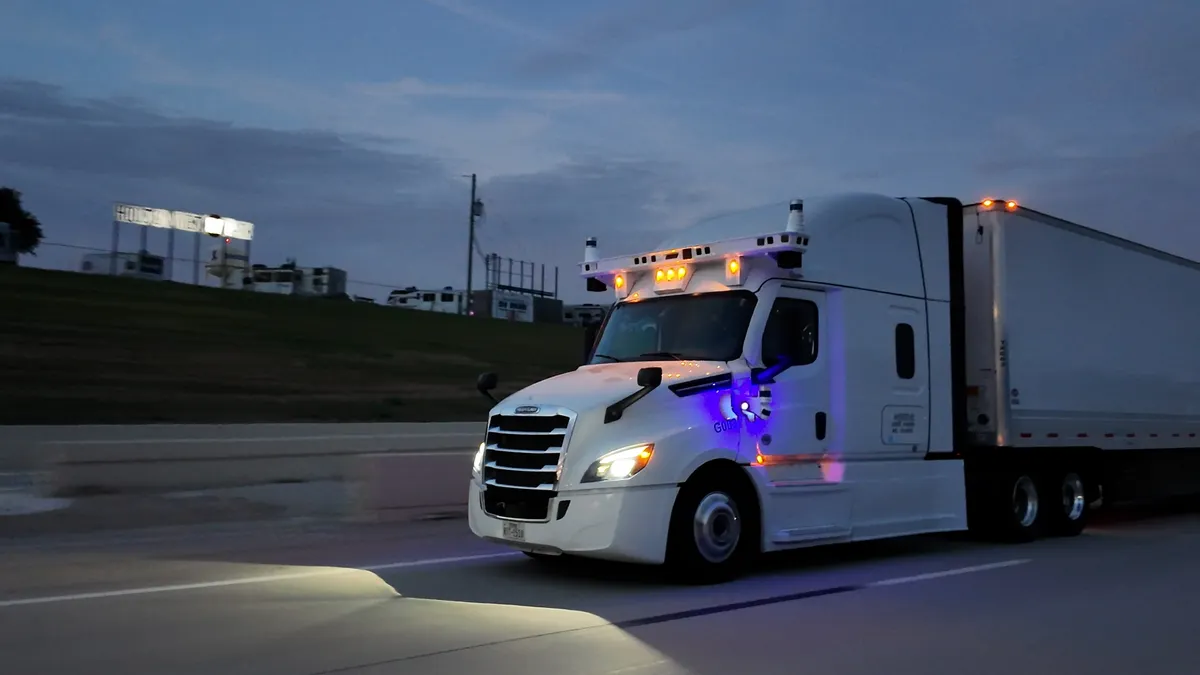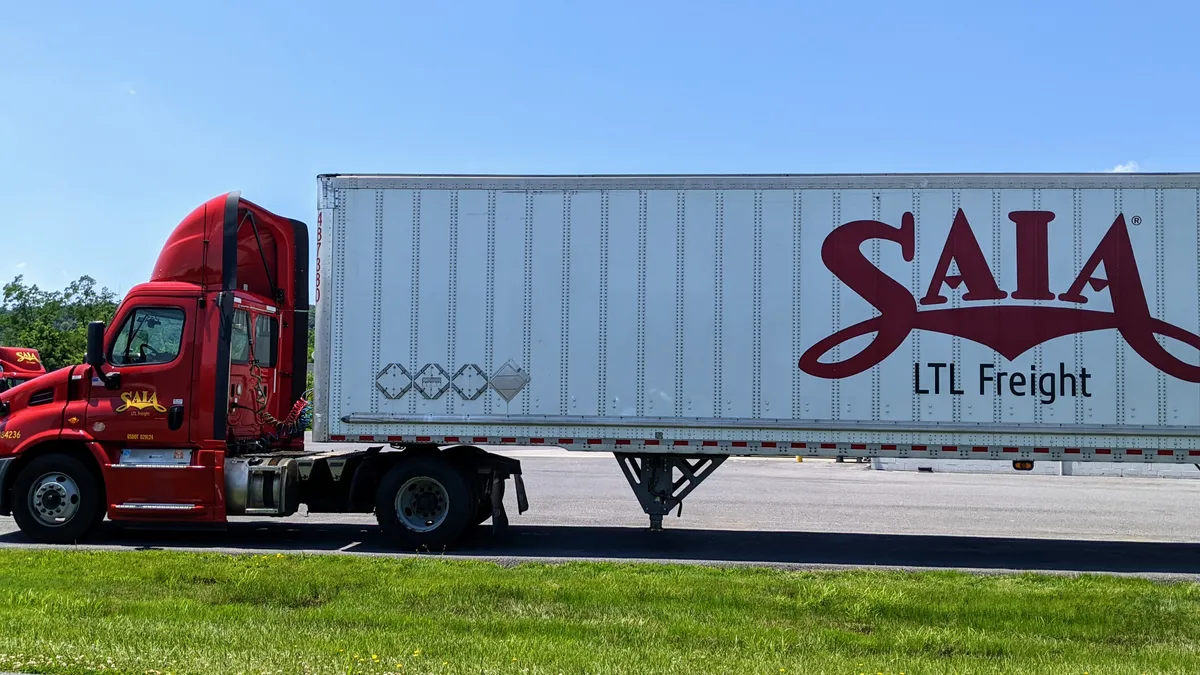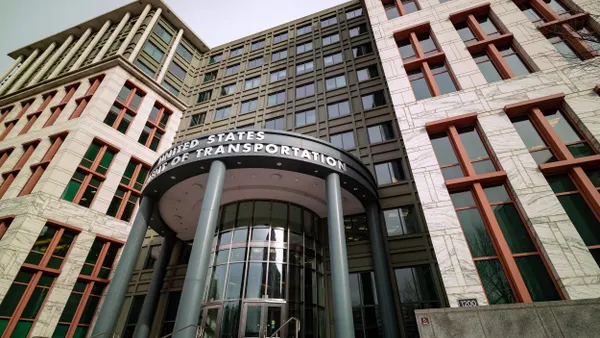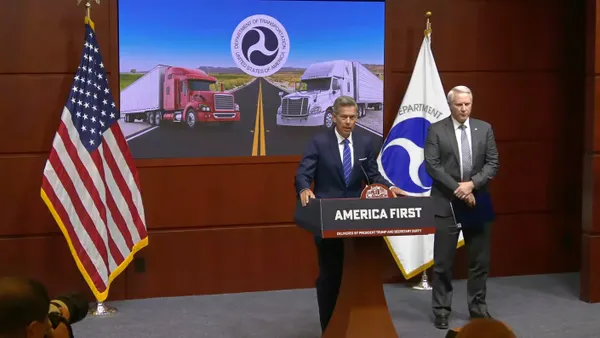Dive Brief:
- A Bot Auto tractor-trailer navigated Texas roadways, traffic and hazards in July without a human onboard, signaling a step forward in preparing the technology for carrier routes.
- The milestone served as a validation benchmark showcasing the autonomous technology’s capabilities, safety and maturity, the business said in a news release.
- “This validation run is a meaningful step, but it’s a waypoint, not the destination,” Xiaodi Hou, the company’s founder and CEO, said in the release. The test run also helps lay the groundwork for doing commercial freight runs between Bot Auto’s Houston and San Antonio hubs, the company said.
Dive Insight:
The tractor-trailer operated at dusk and during the nighttime on the route, per video footage, adhering to traffic signs in urban areas, merging onto highways and waiting for oncoming traffic before turning left.
When a large recreational vehicle drifted slightly toward the truck on I-10 in the Houston area, the truck reacted defensively by slowing down an extended video showed. Later, another tractor-trailer encroached on the AV’s lane, prompting the driverless one to move away and toward the shoulder.
These potentially problematic situations, including a fire truck at a traffic signal running with full lights and sirens, were unusual for the route, the company said.
The approximately 40-mile route took 55 minutes, involved transporting pallets of water bottles to act as a load and had zero problems, a company spokesperson told Trucking Dive.
Other AV firms are also showcasing their technology. Aurora Innovation’s live videos have been featuring its AV technology with trucks on lengthy stretches of roadways, and Waabi videos recently highlighted digitally simulated environments being used to help train its technology.
While Bot Auto and other industry players have been using drivers onboard to monitor the performance of AVs, the removal of a person onboard on a lengthy public route comes after just two years for Bot Auto, the company noted. Other humanless testing for the company has occurred on a closed circuit course and a shorter route.
“Bot Auto moves quickly because its foundation-to-all unified neural network eliminates the inefficiencies of modular architectures, enabling 30x faster development with built-in simulation, self-supervised learning, and GPU-driven acceleration,” the spokesperson said. “By focusing solely on L4 driverless truck autonomy our validation and scale happen organically as part of daily development rather than as after-the-fact campaigns.”










